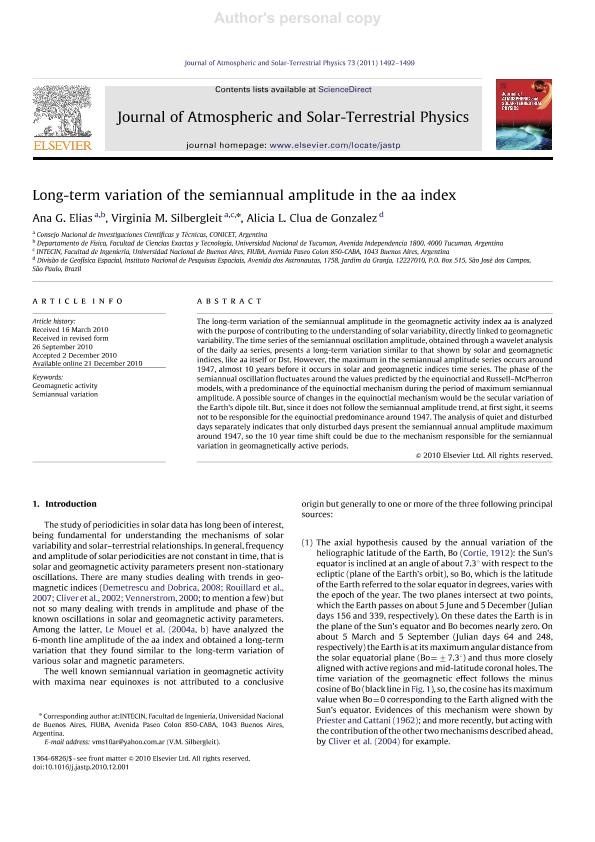Artículo
Long-term variation of the semiannual amplitude in the aa index
Fecha de publicación:
07/2011
Editorial:
Elsevier
Revista:
Journal of Atmospheric and Solar-Terrestrial Physics
ISSN:
1364-6826
Idioma:
Inglés
Tipo de recurso:
Artículo publicado
Clasificación temática:
Resumen
The long-term variation of the semiannual amplitude in the geomagnetic activity index aa is analyzed with the purpose of contributing to the understanding of solar variability, directly linked to geomagnetic variability. The time series of the semiannual oscillation amplitude, obtained through a wavelet analysis of the daily aa series, presents a long-term variation similar to that shown by solar and geomagnetic indices, like aa itself or Dst. However, the maximum in the semiannual amplitude series occurs around 1947, almost 10 years before it occurs in solar and geomagnetic indices time series. The phase of the semiannual oscillation fluctuates around the values predicted by the equinoctial and Russell–McPherron models, with a predominance of the equinoctial mechanism during the period of maximum semiannual amplitude. A possible source of changes in the equinoctial mechanism would be the secular variation of the Earth's dipole tilt. But, since it does not follow the semiannual amplitude trend, at first sight, it seems not to be responsible for the equinoctial predominance around 1947. The analysis of quiet and disturbed days separately indicates that only disturbed days present the semiannual annual amplitude maximum around 1947, so the 10 year time shift could be due to the mechanism responsible for the semiannual variation in geomagnetically active periods.
Palabras clave:
Geomagnetic Activity
,
Wavelets
,
Solar Activity
,
Periodicities
Archivos asociados
Licencia
Identificadores
Colecciones
Articulos(CCT - NOA SUR)
Articulos de CTRO.CIENTIFICO TECNOL.CONICET - NOA SUR
Articulos de CTRO.CIENTIFICO TECNOL.CONICET - NOA SUR
Articulos(SEDE CENTRAL)
Articulos de SEDE CENTRAL
Articulos de SEDE CENTRAL
Citación
Elias, Ana Georgina; Silbergleit, Virginia Mabel; Clua de Gonzalez, Alicia L.; Long-term variation of the semiannual amplitude in the aa index; Elsevier; Journal of Atmospheric and Solar-Terrestrial Physics; 73; 11; 7-2011; 1492-1499
Compartir
Altmétricas




